My Favourite Boss Fights
Bosses are pretty often my favourite part of the games they appear in, so I thought it'd be fun to make this highlight reel of highlights. Not a conclusive list or anything, I'll probably add to it as I play more and more games or think back on or revisit others. Rationales for each boss is included in the notes for each game, along with their soundtracks (since that's one of my favourite parts of pretty much every example listed).
Some tidbits and stuff maybe worth noting:
- There's no real particular order of preference among any of these games, I just decided to list the ones with the most examples first. There is a bit of overlap with my all-time favourites, but that's just because I'm pretty into action games; a bunch outside of that sphere don't have any or aren't as focused on them as some of the games here tend to be.
- It's cool to be able to write in a bit more off-the-cuff kind of way in these notes. I try to put a lot of effort into my full-on reviews both here and on Letterboxd but I also hope they don't come across as too tonally robotic or anything, because I'm actually a pretty ditsy guy in real life.
- It's also fun to comment a little bit on some games I haven't done reviews for yet or might not at all; 2023 was somewhat hectic at times on my end, so I occasionally haven't found as much time as I'd like to do full-on writeups about some stuff (though at least that keeps the ideas coming). Helps to expand a bit on what I appreciate about some I have reviewed but couldn't work in at the time too.
- I think Capcom and Platinum might be pretty good at this sort of thing.
Some tidbits and stuff maybe worth noting:
- There's no real particular order of preference among any of these games, I just decided to list the ones with the most examples first. There is a bit of overlap with my all-time favourites, but that's just because I'm pretty into action games; a bunch outside of that sphere don't have any or aren't as focused on them as some of the games here tend to be.
- It's cool to be able to write in a bit more off-the-cuff kind of way in these notes. I try to put a lot of effort into my full-on reviews both here and on Letterboxd but I also hope they don't come across as too tonally robotic or anything, because I'm actually a pretty ditsy guy in real life.
- It's also fun to comment a little bit on some games I haven't done reviews for yet or might not at all; 2023 was somewhat hectic at times on my end, so I occasionally haven't found as much time as I'd like to do full-on writeups about some stuff (though at least that keeps the ideas coming). Helps to expand a bit on what I appreciate about some I have reviewed but couldn't work in at the time too.
- I think Capcom and Platinum might be pretty good at this sort of thing.
39 Games
Minamoto no Yoshitsune
Adore how blisteringly fast paced this fight is and how it integrates the environment into the fight (something these two games don’t do especially often), i.e. how he perches on a series of wooden posts and you can knock him off to instantly drain his ki if you’re quick enough. Being immune to every status effect also helps sell the impression of what a legendary fighter he is and how tragic it is that he’s become a yokai, while also meaning you can’t get too cheesy (no looking up guides for this one, kiddos). Think this clip I recorded on a whim a few years back encapsulates a lot of what I like about it.
William Adams
Got unreasonably excited the first time I got to this point and realised that yes, they are doing the thing where you fight the last game’s protag and yes, you are the boss fight in this instance. So cool to see the character you played as in a game as long and meaty as the first Nioh now squaring off with you, as well as how all the skills you became so familiar with have been adapted to the mechanics of its sequel’s boss fights. Also fun to bully; didn’t realise you could prevent him popping Living Weapon until that clip.
Magara Naotaka
Being able to destroy his arm as a means to damage his ki and limit the amount of attacks he can do’s not just a fun spin on the locational damage gimmick both Niohs’ bosses do so well, but also a standout example of the way these games graduate obscure historical tidbits into game mechanics – supposedly, the real life Magara Naotaka lost his odachi while fighting during the Battle of Anegawa but continued bare-handed until he was killed alongside his son. How do people not make a bigger deal out of how cool this sort of thing is?
Tokichiro
Staggering amount of effort gone into making new, visually angstier, progressively demonic versions of attacks players can utilise themselves to convey this character’s downfall when they could so easily have been lazy and just reused the animations wholesale. Love the detail of him complaining if you decide to pop Yokai Shift against him, obviously hurt by it – adds a layer of emotion that you wouldn’t typically associate with the world’s finest Diablogaidenmushaloot-‘em-uplike.
Otakemaru
Big step up from the first game’s finale presentation-wise and in terms of the aforementioned emotional stakes, the way Tokichiro’s guardian spirit shows up to help is just class. Lures you into a false sense of security and familiarity by swapping between hostile versions of your own Yokai Shifts to begin with before lifting the veil and pulling Unlimited Blade Works out of his arse, among other things; feels like he’s got as many avenues of offence as you do. The finisher at the end’s ace too.
Adore how blisteringly fast paced this fight is and how it integrates the environment into the fight (something these two games don’t do especially often), i.e. how he perches on a series of wooden posts and you can knock him off to instantly drain his ki if you’re quick enough. Being immune to every status effect also helps sell the impression of what a legendary fighter he is and how tragic it is that he’s become a yokai, while also meaning you can’t get too cheesy (no looking up guides for this one, kiddos). Think this clip I recorded on a whim a few years back encapsulates a lot of what I like about it.
William Adams
Got unreasonably excited the first time I got to this point and realised that yes, they are doing the thing where you fight the last game’s protag and yes, you are the boss fight in this instance. So cool to see the character you played as in a game as long and meaty as the first Nioh now squaring off with you, as well as how all the skills you became so familiar with have been adapted to the mechanics of its sequel’s boss fights. Also fun to bully; didn’t realise you could prevent him popping Living Weapon until that clip.
Magara Naotaka
Being able to destroy his arm as a means to damage his ki and limit the amount of attacks he can do’s not just a fun spin on the locational damage gimmick both Niohs’ bosses do so well, but also a standout example of the way these games graduate obscure historical tidbits into game mechanics – supposedly, the real life Magara Naotaka lost his odachi while fighting during the Battle of Anegawa but continued bare-handed until he was killed alongside his son. How do people not make a bigger deal out of how cool this sort of thing is?
Tokichiro
Staggering amount of effort gone into making new, visually angstier, progressively demonic versions of attacks players can utilise themselves to convey this character’s downfall when they could so easily have been lazy and just reused the animations wholesale. Love the detail of him complaining if you decide to pop Yokai Shift against him, obviously hurt by it – adds a layer of emotion that you wouldn’t typically associate with the world’s finest Diablogaidenmushaloot-‘em-uplike.
Otakemaru
Big step up from the first game’s finale presentation-wise and in terms of the aforementioned emotional stakes, the way Tokichiro’s guardian spirit shows up to help is just class. Lures you into a false sense of security and familiarity by swapping between hostile versions of your own Yokai Shifts to begin with before lifting the veil and pulling Unlimited Blade Works out of his arse, among other things; feels like he’s got as many avenues of offence as you do. The finisher at the end’s ace too.
Vergil
My favourite spin on a rival fight in any game. Feels like there are endless layers of interaction to manipulate – baiting taunts out of him with your own, shooting down his summoned swords with Dante’s (complete with unique dialogue for it), clashing swords with him but also having to be quick to capitalise on the openings created by it, managing his health regeneration during Sin Devil Trigger, target prioritisation whenever he whips out his clone, etc. Lends itself so naturally to replays in tandem with being its own mission that I occasionally boot the game up specifically just to fight him again. Genuinely like they took another player and translated them into the game.
Dante
Much of the above applies here as well, but with the added benefit that (across missions 19 and 20) Dante uses almost all of the arsenal available to the player whenever playing as him; arguably makes for a more varied fight than Vergil, since he’s got more tools to watch out for, as well as probably selling the feeling of a 1:1 even match better given that he has a comparable amount of tools to you (as opposed to boss Vergil only using Yamato). The only real misses are that his health doesn’t regenerate in Devil Trigger for whatever reason and that his attack patterns feel a bit more rigid than Vergil’s, in that he’ll just keep attacking the air if you move out of his range, but being able to clash swords with him at least helps mitigate the latter a bit and keep it interactive. That besides, it’s just really cool that they decided to add this to the game at all.
Cavaliere Angelo
The slow mo on sword clashes never gets old. So focused on the singular concept of whittling down his defences through either those or bursting down his shield pauldron things, yet so versatile in that both avenues of offence can be tackled with whatever tools you please. Demands you stay on your toes too given that he teleport right next to you from anywhere on screen, often while chucking out projectiles at the same time. Also love how the amount of juice he has remaining’s communicated to the player by how far the electric charge goes up his sword; really fun and practical visual design.
Nightmare, Griffon & Shadow
Not just conceptually interesting for how it twists both older bosses from DMC1 and a playable character’s moveset from DMC5 into a fresh new obstacle course, but also probably the most difficult DMC5 gets. It’s so easy to lose track of one of the three and get demolished in the span of a few seconds because of it, especially because the other two don’t let up or wait their turn whenever one’s on the assault – the move where Nightmare disappears and then sprouts up from the ground with a punch gets me every time. Pushes Dante’s enormous toolbox and my thumbs to their limits.
My favourite spin on a rival fight in any game. Feels like there are endless layers of interaction to manipulate – baiting taunts out of him with your own, shooting down his summoned swords with Dante’s (complete with unique dialogue for it), clashing swords with him but also having to be quick to capitalise on the openings created by it, managing his health regeneration during Sin Devil Trigger, target prioritisation whenever he whips out his clone, etc. Lends itself so naturally to replays in tandem with being its own mission that I occasionally boot the game up specifically just to fight him again. Genuinely like they took another player and translated them into the game.
Dante
Much of the above applies here as well, but with the added benefit that (across missions 19 and 20) Dante uses almost all of the arsenal available to the player whenever playing as him; arguably makes for a more varied fight than Vergil, since he’s got more tools to watch out for, as well as probably selling the feeling of a 1:1 even match better given that he has a comparable amount of tools to you (as opposed to boss Vergil only using Yamato). The only real misses are that his health doesn’t regenerate in Devil Trigger for whatever reason and that his attack patterns feel a bit more rigid than Vergil’s, in that he’ll just keep attacking the air if you move out of his range, but being able to clash swords with him at least helps mitigate the latter a bit and keep it interactive. That besides, it’s just really cool that they decided to add this to the game at all.
Cavaliere Angelo
The slow mo on sword clashes never gets old. So focused on the singular concept of whittling down his defences through either those or bursting down his shield pauldron things, yet so versatile in that both avenues of offence can be tackled with whatever tools you please. Demands you stay on your toes too given that he teleport right next to you from anywhere on screen, often while chucking out projectiles at the same time. Also love how the amount of juice he has remaining’s communicated to the player by how far the electric charge goes up his sword; really fun and practical visual design.
Nightmare, Griffon & Shadow
Not just conceptually interesting for how it twists both older bosses from DMC1 and a playable character’s moveset from DMC5 into a fresh new obstacle course, but also probably the most difficult DMC5 gets. It’s so easy to lose track of one of the three and get demolished in the span of a few seconds because of it, especially because the other two don’t let up or wait their turn whenever one’s on the assault – the move where Nightmare disappears and then sprouts up from the ground with a punch gets me every time. Pushes Dante’s enormous toolbox and my thumbs to their limits.
Prince Vorkken
Mystified both by how often I’ve read Vorkken’s fights spoken of as a point of derision and the notion that he doesn’t play by the same rules you do. Being able to control the speed and power of his attacks by KOing members of his own blunderful 101, the same way yours wax or wane accordingly, is a fascinating way to put you and him on a level playing field in a manner that’s only achievable with this game’s mechanics, and his squad being combo fodder means there’s effectively endless means to maintain your score. The fourth fight with him’s also the only boss in the game where Tables Turn doesn’t play, which is a really elegant way to communicate the stakes.
Laambo & Diekuu Ohrowchee
I’ve gotten sweaty palms every single time I’ve played this fight. Not exaggerating. The bit where they start bursting through the platforms you have to jump between just does something to me, man. You get a bit of everything in this fight; that, an unintrusive shooting segment near the start (a bit lengthy for its low difficulty, granted), a scuffle with Laambo himself as a straightforward pacebreaker, prioritisation of multiple targets, those hidden pseudo-QTE special action things, etc. Excellent way to introduce the game, like a summary of what’s to come.
Gah-Goojin
This straight up filtered me for a good few months when I first got my Wii U and made me hesitant to pick the game back up, but I’ve come to see it as an exemplification of what makes TW101 shine. This fight’s got l a y e r s – heal the tower you’re standing on by drawing circles around the craters Gah-Goojin makes, manage your number of active squad members or else you can’t counter his fist slams, counter that one particularly egregious attack by standing completely still as Wonder Pink, and any number of other hidden mechanics you could write a tutorial on. I love that it doesn’t tell you about any of this. Sink or swim, buddy.
Wonder Blue
Somehow so intuitive despite the fact that you’re only controlling one character during this bit as opposed to the usual dozens. So many core tools stripped away and yet every button on the controller still works exactly how you would expect them to. This duel could’ve easily been a snag on every playthrough in the hands of a lesser team, but instead it’s one of the parts I look forward to the most for how different it is to every other part of the game; it also helps that Blue’s whole narrative arc from roughly here to operation 006 is really compelling.
Mystified both by how often I’ve read Vorkken’s fights spoken of as a point of derision and the notion that he doesn’t play by the same rules you do. Being able to control the speed and power of his attacks by KOing members of his own blunderful 101, the same way yours wax or wane accordingly, is a fascinating way to put you and him on a level playing field in a manner that’s only achievable with this game’s mechanics, and his squad being combo fodder means there’s effectively endless means to maintain your score. The fourth fight with him’s also the only boss in the game where Tables Turn doesn’t play, which is a really elegant way to communicate the stakes.
Laambo & Diekuu Ohrowchee
I’ve gotten sweaty palms every single time I’ve played this fight. Not exaggerating. The bit where they start bursting through the platforms you have to jump between just does something to me, man. You get a bit of everything in this fight; that, an unintrusive shooting segment near the start (a bit lengthy for its low difficulty, granted), a scuffle with Laambo himself as a straightforward pacebreaker, prioritisation of multiple targets, those hidden pseudo-QTE special action things, etc. Excellent way to introduce the game, like a summary of what’s to come.
Gah-Goojin
This straight up filtered me for a good few months when I first got my Wii U and made me hesitant to pick the game back up, but I’ve come to see it as an exemplification of what makes TW101 shine. This fight’s got l a y e r s – heal the tower you’re standing on by drawing circles around the craters Gah-Goojin makes, manage your number of active squad members or else you can’t counter his fist slams, counter that one particularly egregious attack by standing completely still as Wonder Pink, and any number of other hidden mechanics you could write a tutorial on. I love that it doesn’t tell you about any of this. Sink or swim, buddy.
Wonder Blue
Somehow so intuitive despite the fact that you’re only controlling one character during this bit as opposed to the usual dozens. So many core tools stripped away and yet every button on the controller still works exactly how you would expect them to. This duel could’ve easily been a snag on every playthrough in the hands of a lesser team, but instead it’s one of the parts I look forward to the most for how different it is to every other part of the game; it also helps that Blue’s whole narrative arc from roughly here to operation 006 is really compelling.
King Darius
The most dramatic rendition of swinging on monkey bars to grace a video game. Stands out from a cast of other standout bosses for how platforming's integrated into the fight via the grapple points; you and him are absolutely dancing around each other in the air for prolonged periods of time, and it's as graceful and entertaining in its animation as it is to control. The music does a good job of conveying the tragedy of seeing this proud figure shambling around at the behest of his son too and his special counter animation is probably the coolest in the game.
Vahram
Had the biggest grin whenever he first reversed time against me. Now we know how the mooks in the trilogy must've felt! Great internal difficulty curve within the series of fights against him; you get an additional Sargon to help you at first, then the training wheels come off, then you're finally greeted with unforeseen attacks in addition to souped up versions of familiar threats. As much as we may meme about him being Persian Vergil, he's differentiated in interesting ways; having to narrowly jump between the gaps of his Judgment Cut equivalent for example is a really novel way to translate that sort of attack into 2D in a way that seems like it'd be hard to replicate in 3D.
Kiana and Chamrosh
This is tough. The bump up in the amount of health relative to other bosses immediately felt as soon as you land that first hit and leaves such a strong impression as the realisation of just how much you need to keep one eye on each of this pair starts to sink in. They're built-up well via the sickly hues of their area (which clear upon their defeat) and I love the silhouette effect whenever Kiana warps you into her clone dimension thing as well, both emblematic of how striking this game's art direction often is.
Jahandar
Another instance of excellent buildup; you read so many epitaphs of all the legions of soldiers brought down singlehandedly by this lad and the increasingly big piles of skulls that become apparent as you near his arena really sell the foreboding of it all. This was also one of the earliest moments where it began to dawn on me how cool The Lost Crown's combat is, the feeling of risking death by dashing straight into his charge attack and just barely ending the fight as he's mid-attack exemplifies the best kind of cinematicness in gaming - that which the organically player brings about themselves through the freedom offered by mechanics.
The most dramatic rendition of swinging on monkey bars to grace a video game. Stands out from a cast of other standout bosses for how platforming's integrated into the fight via the grapple points; you and him are absolutely dancing around each other in the air for prolonged periods of time, and it's as graceful and entertaining in its animation as it is to control. The music does a good job of conveying the tragedy of seeing this proud figure shambling around at the behest of his son too and his special counter animation is probably the coolest in the game.
Vahram
Had the biggest grin whenever he first reversed time against me. Now we know how the mooks in the trilogy must've felt! Great internal difficulty curve within the series of fights against him; you get an additional Sargon to help you at first, then the training wheels come off, then you're finally greeted with unforeseen attacks in addition to souped up versions of familiar threats. As much as we may meme about him being Persian Vergil, he's differentiated in interesting ways; having to narrowly jump between the gaps of his Judgment Cut equivalent for example is a really novel way to translate that sort of attack into 2D in a way that seems like it'd be hard to replicate in 3D.
Kiana and Chamrosh
This is tough. The bump up in the amount of health relative to other bosses immediately felt as soon as you land that first hit and leaves such a strong impression as the realisation of just how much you need to keep one eye on each of this pair starts to sink in. They're built-up well via the sickly hues of their area (which clear upon their defeat) and I love the silhouette effect whenever Kiana warps you into her clone dimension thing as well, both emblematic of how striking this game's art direction often is.
Jahandar
Another instance of excellent buildup; you read so many epitaphs of all the legions of soldiers brought down singlehandedly by this lad and the increasingly big piles of skulls that become apparent as you near his arena really sell the foreboding of it all. This was also one of the earliest moments where it began to dawn on me how cool The Lost Crown's combat is, the feeling of risking death by dashing straight into his charge attack and just barely ending the fight as he's mid-attack exemplifies the best kind of cinematicness in gaming - that which the organically player brings about themselves through the freedom offered by mechanics.
In general doesn’t get enough credit for just how high quality its boss roster is across the board, probably since being Kirby pretty much mandates that they can’t be too tough.
Meta Knight
Special to me in a very specific and personal way. I played Nightmare in Dreamland to death as a kid (it was my go-to when I was off school sick and stayed with my granny & granda during the day), and when doing its boss rush, I’d often daydream whenever I got to Meta Knight about what it’d be like to fight him in 3D. I said it already in my review of Forgotten Land, but just for emphasis – this is exactly how I imagined it’d be, even down to the colour of the bricks in his arena. So full of loving details too, like how he’s got an alternate intro if you don’t bother to pick up the sword at the start or how you can actually clash swords with him to stop Upper Calibur if you time a slash just right.
King Dedede / Forgo Dedede
Potentially cheating to include what’s technically two bosses in one place, but they’ve enough conceptual common ground that I think of them as a pair, specifically on the emphasis both fights put on area denial. Forgo escalates that to an enjoyably ridiculous level with how he outright tips the arena into the lava beneath, but there’s also something to be said for how bread and butter DDD essentially becomes a Furi boss whenever he picks up that pillar. Combat’s often a weak point of platformers, so making navigation itself part of it as these fights do’s a really clever way of not just circumventing that issue but making it a strength.
Fecto Elfilis / Chaos Elfilis
10/10 buildup and payoff, the finale with the truck is insane. The aforementioned (and intentional, obvs) easy breezy nature of Kirby helps it stand out all the more when the developers decide to graze your knees a bit; even without the damage of his post-game version, the timings of Elfilis’ attacks were pretty tricky to get used to, helped in part how how strikingly alien he looks/moves and the way he flies between the stage and the background.
Meta Knight
Special to me in a very specific and personal way. I played Nightmare in Dreamland to death as a kid (it was my go-to when I was off school sick and stayed with my granny & granda during the day), and when doing its boss rush, I’d often daydream whenever I got to Meta Knight about what it’d be like to fight him in 3D. I said it already in my review of Forgotten Land, but just for emphasis – this is exactly how I imagined it’d be, even down to the colour of the bricks in his arena. So full of loving details too, like how he’s got an alternate intro if you don’t bother to pick up the sword at the start or how you can actually clash swords with him to stop Upper Calibur if you time a slash just right.
King Dedede / Forgo Dedede
Potentially cheating to include what’s technically two bosses in one place, but they’ve enough conceptual common ground that I think of them as a pair, specifically on the emphasis both fights put on area denial. Forgo escalates that to an enjoyably ridiculous level with how he outright tips the arena into the lava beneath, but there’s also something to be said for how bread and butter DDD essentially becomes a Furi boss whenever he picks up that pillar. Combat’s often a weak point of platformers, so making navigation itself part of it as these fights do’s a really clever way of not just circumventing that issue but making it a strength.
Fecto Elfilis / Chaos Elfilis
10/10 buildup and payoff, the finale with the truck is insane. The aforementioned (and intentional, obvs) easy breezy nature of Kirby helps it stand out all the more when the developers decide to graze your knees a bit; even without the damage of his post-game version, the timings of Elfilis’ attacks were pretty tricky to get used to, helped in part how how strikingly alien he looks/moves and the way he flies between the stage and the background.
Armon Ritter
Treasure’s weirdness and wonderfulness at its best. Take on a trenchcoat-clad, shadow magic(?)-wielding general floating above the sea who then transforms into a trio of giant inky dolphins, then an even giant-er manta ray that covers your camera in leeches, then some sort of eldritch squid/goat thing with antennae that use the borders of your screen against you. Bursting at the seams with creativity in concept and mechanics; it was at this point I knew I’d never played anything else like it.
Hibaru Yaju
Gotta reiterate the last part of the paragraph above here, because my 3D rail shooter’s suddenly turned into some sort of 2D samurai dueling sim. It’s so crazy how versatile this game’s mechanics that they can be converted into such a radically different format and still obey the same rules as during standard gameplay segments; you really have no idea what’s coming up next in this game, and meeting Hibaru for the first time solidifies that.
Commander Deko Gekisho
This nonce has ~37 health bars and drowns the screen in hazards to an extent that needs to be seen to be believed. Seriously, I’m not sure if it’s possible to beat him without taking damage. Twists a habitually defensive mechanic into an offensive one in such a climactic way too. Dazzling to all five senses and just a phenomenal endurance test to finish off one of the most insane-in-the-membrane games of its generation.
Treasure’s weirdness and wonderfulness at its best. Take on a trenchcoat-clad, shadow magic(?)-wielding general floating above the sea who then transforms into a trio of giant inky dolphins, then an even giant-er manta ray that covers your camera in leeches, then some sort of eldritch squid/goat thing with antennae that use the borders of your screen against you. Bursting at the seams with creativity in concept and mechanics; it was at this point I knew I’d never played anything else like it.
Hibaru Yaju
Gotta reiterate the last part of the paragraph above here, because my 3D rail shooter’s suddenly turned into some sort of 2D samurai dueling sim. It’s so crazy how versatile this game’s mechanics that they can be converted into such a radically different format and still obey the same rules as during standard gameplay segments; you really have no idea what’s coming up next in this game, and meeting Hibaru for the first time solidifies that.
Commander Deko Gekisho
This nonce has ~37 health bars and drowns the screen in hazards to an extent that needs to be seen to be believed. Seriously, I’m not sure if it’s possible to beat him without taking damage. Twists a habitually defensive mechanic into an offensive one in such a climactic way too. Dazzling to all five senses and just a phenomenal endurance test to finish off one of the most insane-in-the-membrane games of its generation.
Demon King Ganondorf
Lost my fr*ckin’ marbles whenever he flurry rushed my flurry rush. Outright removing your hearts whenever you get hit as opposed to just temporarily limiting them like gloom or Phantom Ganon do ups the ante by a ton, which says a lot considering that’s only the second coolest way that your UI’s manipulated in this fight; that phase transition where his health bar near enough grows off the screen’s gonna stick with me for a long time. Refreshingly layered for a Zelda boss too, because I somehow didn’t initially think to try reflecting those red/black clouds back at him when that seems so obvious in hindsight; the key draw of experimentation’s still going strong in a scenario where they could’ve easily gotten away without it. The gradual building of the music’s ace too.
Flux Constructs
Tempted to call these lads TOTK’s design philosophy distilled into an enemy. Can you even count the amount of ways it can be tackled? You can manipulate every block that comprises their body, ride them into the sky with Recall, remove their ability to punch/stomp you by taking off their hands and feet, cause them to instantly collapse by grabbing their core, Ascend through them when they start floating, etc. So simple in concept yet so many moving parts (literally) in practice.
Colgera
May or may not be convinced that everyone who doesn't enjoy this game shot him in his bellies instead of diving through them.
Lost my fr*ckin’ marbles whenever he flurry rushed my flurry rush. Outright removing your hearts whenever you get hit as opposed to just temporarily limiting them like gloom or Phantom Ganon do ups the ante by a ton, which says a lot considering that’s only the second coolest way that your UI’s manipulated in this fight; that phase transition where his health bar near enough grows off the screen’s gonna stick with me for a long time. Refreshingly layered for a Zelda boss too, because I somehow didn’t initially think to try reflecting those red/black clouds back at him when that seems so obvious in hindsight; the key draw of experimentation’s still going strong in a scenario where they could’ve easily gotten away without it. The gradual building of the music’s ace too.
Flux Constructs
Tempted to call these lads TOTK’s design philosophy distilled into an enemy. Can you even count the amount of ways it can be tackled? You can manipulate every block that comprises their body, ride them into the sky with Recall, remove their ability to punch/stomp you by taking off their hands and feet, cause them to instantly collapse by grabbing their core, Ascend through them when they start floating, etc. So simple in concept yet so many moving parts (literally) in practice.
Colgera
May or may not be convinced that everyone who doesn't enjoy this game shot him in his bellies instead of diving through them.
Grigori
When I said in my review that Dragon’s Dogma made me think “this is probably what it’d be like to fight a dragon in real life,” Grigori’s what I was referring to. Ragdolling you and your pawns all over the place to the point that scaling up his body’s always a struggle, his weak spot being tough to reach, utilising top tier spells with a literal flick of his wrist, his monologues during the fight and the narrative weight of them, the setpiece-y parts where you’re running from him down a corridor or flying over mountains atop his back, the sheer size of him and his attacks etc., it’s all there. Communicates his importance to the world, strength, intelligence and his matter-of-fact awareness of it all so, so effectively. The best dragon in video games and it’s not close.
Daimon
Shares many of Grigori’s strong points, including how refreshingly traditional a depiction he is of a medieval demon (Itsuno and co. specifically mentioned they “avoided eccentricities” in DD’s creature design), but with a more tragic atmosphere and compounded by the surprise of his bizarre second phase whenever you complete Bitterblack Isle a second time. His Rift portal’s easily the most daunting thing to go up against in the game, but also one of the most satisfying to diffuse, and a perfect exclamation mark to cap off what a grim place Bitterblack is. Lots of opportunities to use the environment to your advantage as well thanks to the pillars in his arena, encapsulating the dynamism that makes DD shine.
When I said in my review that Dragon’s Dogma made me think “this is probably what it’d be like to fight a dragon in real life,” Grigori’s what I was referring to. Ragdolling you and your pawns all over the place to the point that scaling up his body’s always a struggle, his weak spot being tough to reach, utilising top tier spells with a literal flick of his wrist, his monologues during the fight and the narrative weight of them, the setpiece-y parts where you’re running from him down a corridor or flying over mountains atop his back, the sheer size of him and his attacks etc., it’s all there. Communicates his importance to the world, strength, intelligence and his matter-of-fact awareness of it all so, so effectively. The best dragon in video games and it’s not close.
Daimon
Shares many of Grigori’s strong points, including how refreshingly traditional a depiction he is of a medieval demon (Itsuno and co. specifically mentioned they “avoided eccentricities” in DD’s creature design), but with a more tragic atmosphere and compounded by the surprise of his bizarre second phase whenever you complete Bitterblack Isle a second time. His Rift portal’s easily the most daunting thing to go up against in the game, but also one of the most satisfying to diffuse, and a perfect exclamation mark to cap off what a grim place Bitterblack is. Lots of opportunities to use the environment to your advantage as well thanks to the pillars in his arena, encapsulating the dynamism that makes DD shine.
Strider
Love how he leaps into the air and just flat out deletes whatever demon you’ve summoned unless you combo him into a wink attack. Feels like a microcosm of what I appreciate so much about this game in general, like he’s an anti-rival fight, flying in the face of his archetype’s conventions by outright denying the player access to a core mechanic unless you’re already in an advantage state. Does a phenomenal job of conveying what an overpowering, otherworldly presence he is in tandem with how savage his attacks look and sound, the setting in which he first appears (the crimson red moonlight building you fight on the side of’s great) and the kickass music. A joyous back-and-forth altogether.
Singularity, all forms
Again, maybe cheating to put what you could technically consider a few bosses into one slot, but I think they come together so wholistically – there probably aren’t many better ways to instil the same exhaustion Bayonetta herself’s feeling in this moment than to string them one after the other like really big, long phases of the same one gruelling fight. How relieving it felt to finally take him down for the first time after weaving my way through his absolute onslaught of different tools like doppelgangers, localised versions of the out-of-bounds fog, summons and more has really stuck with me. Standout trippy visuals as well, both for environments you fight in and his own Buddhist-y getup.
Love how he leaps into the air and just flat out deletes whatever demon you’ve summoned unless you combo him into a wink attack. Feels like a microcosm of what I appreciate so much about this game in general, like he’s an anti-rival fight, flying in the face of his archetype’s conventions by outright denying the player access to a core mechanic unless you’re already in an advantage state. Does a phenomenal job of conveying what an overpowering, otherworldly presence he is in tandem with how savage his attacks look and sound, the setting in which he first appears (the crimson red moonlight building you fight on the side of’s great) and the kickass music. A joyous back-and-forth altogether.
Singularity, all forms
Again, maybe cheating to put what you could technically consider a few bosses into one slot, but I think they come together so wholistically – there probably aren’t many better ways to instil the same exhaustion Bayonetta herself’s feeling in this moment than to string them one after the other like really big, long phases of the same one gruelling fight. How relieving it felt to finally take him down for the first time after weaving my way through his absolute onslaught of different tools like doppelgangers, localised versions of the out-of-bounds fog, summons and more has really stuck with me. Standout trippy visuals as well, both for environments you fight in and his own Buddhist-y getup.
Forger of the Forbidden Covenant
The most Bayonetta-like boss in a very unBayonetta-like game. Witch Time being introduced at this point’s such a satisfying way to represent how far Cereza’s confidence has come since the plot’s beginning, as does how it enables her and Cheshire to hold their own in a more conventional fight when so many of the bosses beforehand were so puzzle-like and encouraged more brains on their part than brawn. Shows the power of design-by-subtraction in the same way as the Affinity boss fight; a series trademark that we normally think nothing of becomes special when we’re initially deprived of it.
Affirmer of Phenomena
Fascinated by how they managed to translate Singularity’s fight into such a different gameplay format, even keeping the chopped up choir in his theme, as well as by what his appearance here does for both his own characterisation and Jeanne’s. The spooky atmosphere leading up to him and the way he’s spoken of as a ghost’s a brilliant way to adapt him into Origin’s more transparently fantastical setting, while the climax also recontextualises a particularly controversial part of 3 to be more palatable (in my view, at least; I’d never have known people were so invested in these games’ plots if it weren’t for “it plays great, 1/10” reviews of that game being as common as they are).
The most Bayonetta-like boss in a very unBayonetta-like game. Witch Time being introduced at this point’s such a satisfying way to represent how far Cereza’s confidence has come since the plot’s beginning, as does how it enables her and Cheshire to hold their own in a more conventional fight when so many of the bosses beforehand were so puzzle-like and encouraged more brains on their part than brawn. Shows the power of design-by-subtraction in the same way as the Affinity boss fight; a series trademark that we normally think nothing of becomes special when we’re initially deprived of it.
Affirmer of Phenomena
Fascinated by how they managed to translate Singularity’s fight into such a different gameplay format, even keeping the chopped up choir in his theme, as well as by what his appearance here does for both his own characterisation and Jeanne’s. The spooky atmosphere leading up to him and the way he’s spoken of as a ghost’s a brilliant way to adapt him into Origin’s more transparently fantastical setting, while the climax also recontextualises a particularly controversial part of 3 to be more palatable (in my view, at least; I’d never have known people were so invested in these games’ plots if it weren’t for “it plays great, 1/10” reviews of that game being as common as they are).
General side note: I've written on here before about my distaste for how often people treat "combat" as a synonym for "gameplay," and while I appreciate that the first Ori (which is not only also great, but my favourite game of the year it came out) didn't put as much emphasis on the former, I think Will of the Wisps in general shows that these guys are too good at boss fights for the first game to have not had any. Spread those wings, fellas.
Shriek
Involuntarily swore under my breath when I realised the floor had disappeared. Fantastic escalation in both challenge and spectacle with the final phase in particular embodying everything that makes these games' movement so captivating; deserves similar praise for what I said about Kirby and the Forgotten Land, i.e. making platforming the crux of the fight rather than a disparate part of one. Delivers on the buildup throughout the story very well too and definitely gives the heartstrings a tug or three.
Mora
Another great example of how well this game's bosses' internal difficulty curves are handled; what starts off as a relatively simple exercise in handling area denial soon becomes one in which you now need to juggle multiple targets, make increasingly heavy use of Bash as her projectiles and babies become more frequent and then finally culminating in managing a constant resource drain on top of all this when the lights shut off. The area leading up to her primes you to expect much of this, but part of the beauty of Ori's the trademark difficulty turning what might've otherwise been a rote experience into one that feels gratifying to get the hang of. Also warms the heart that she doesn't end up with some kind of tragic fate unlike most of her neighbours.
Shriek
Involuntarily swore under my breath when I realised the floor had disappeared. Fantastic escalation in both challenge and spectacle with the final phase in particular embodying everything that makes these games' movement so captivating; deserves similar praise for what I said about Kirby and the Forgotten Land, i.e. making platforming the crux of the fight rather than a disparate part of one. Delivers on the buildup throughout the story very well too and definitely gives the heartstrings a tug or three.
Mora
Another great example of how well this game's bosses' internal difficulty curves are handled; what starts off as a relatively simple exercise in handling area denial soon becomes one in which you now need to juggle multiple targets, make increasingly heavy use of Bash as her projectiles and babies become more frequent and then finally culminating in managing a constant resource drain on top of all this when the lights shut off. The area leading up to her primes you to expect much of this, but part of the beauty of Ori's the trademark difficulty turning what might've otherwise been a rote experience into one that feels gratifying to get the hang of. Also warms the heart that she doesn't end up with some kind of tragic fate unlike most of her neighbours.
Mr. Y
Does a great job of carrying on Mr. X’s formula while making his trail of bullets less ambiguous and having a few new tricks of his own – his combat rolls and tracking rocket launcher chuck in just enough spice that he can stand on his own two feet and doesn’t need minions to harass you throughout (a lot more to my taste than his dad). Think this sort of boss who runs away from you benefits loads from SOR4’s universal mechanics too, specifically no longer being able to go offscreen.
Ms. Y
Gives the z-axis a rigorous workout; really fun to have to manage your lateral and vertical distance from her at the same time to avoid her stabs. Big fan of her ultimate move and think it may be the most freeform one in the game, in the sense that you can manipulate its super armour against her (e.g. smacking her with aerials without needing to worry about her being knocked away).
Likely goes without saying, but these two also make a great duo whenever they pair up at the very end.
Does a great job of carrying on Mr. X’s formula while making his trail of bullets less ambiguous and having a few new tricks of his own – his combat rolls and tracking rocket launcher chuck in just enough spice that he can stand on his own two feet and doesn’t need minions to harass you throughout (a lot more to my taste than his dad). Think this sort of boss who runs away from you benefits loads from SOR4’s universal mechanics too, specifically no longer being able to go offscreen.
Ms. Y
Gives the z-axis a rigorous workout; really fun to have to manage your lateral and vertical distance from her at the same time to avoid her stabs. Big fan of her ultimate move and think it may be the most freeform one in the game, in the sense that you can manipulate its super armour against her (e.g. smacking her with aerials without needing to worry about her being knocked away).
Likely goes without saying, but these two also make a great duo whenever they pair up at the very end.
Zaknel / Dokaknel
In awe at the size of this lad. That characteristic plays a couple of roles in making this fight a highlight in a game that doesn’t have any bad ones – pleasing the part of our monkey brains that likes seeing damage numbers flash all over the screen (he’s a total pincushion), but also having to be even more prudent than usual with whatever defensive manoeuvres you use. His body slam especially’s liable to OHKO your whole army or close to it. Benefits from the various tweaks he gets in 2 as well as that game’s additional jump command, but still as threatening as he is engaging in his debut.
Shookle / Shoshookle
One of the most volatile bosses on this list. Easy enough to smother him in fire if you bring along a bunch of ‘pons with flame-imbued equipment, but it balances out because he can grab and permanently kill up to three of your units at once (often your best, since they’re usually at the front); good example of how 2 isn’t necessarily a wholistic improvement as is often touted, since the lack of permadeath in it makes this central hook a bit more anemic. It’s a great one to anchor the fight on, especially since you can burn off his vines to prevent him from being able to use it and it’s usually preceded by him putting your units to sleep; lots of things going on here.
In awe at the size of this lad. That characteristic plays a couple of roles in making this fight a highlight in a game that doesn’t have any bad ones – pleasing the part of our monkey brains that likes seeing damage numbers flash all over the screen (he’s a total pincushion), but also having to be even more prudent than usual with whatever defensive manoeuvres you use. His body slam especially’s liable to OHKO your whole army or close to it. Benefits from the various tweaks he gets in 2 as well as that game’s additional jump command, but still as threatening as he is engaging in his debut.
Shookle / Shoshookle
One of the most volatile bosses on this list. Easy enough to smother him in fire if you bring along a bunch of ‘pons with flame-imbued equipment, but it balances out because he can grab and permanently kill up to three of your units at once (often your best, since they’re usually at the front); good example of how 2 isn’t necessarily a wholistic improvement as is often touted, since the lack of permadeath in it makes this central hook a bit more anemic. It’s a great one to anchor the fight on, especially since you can burn off his vines to prevent him from being able to use it and it’s usually preceded by him putting your units to sleep; lots of things going on here.
Manboth / Manboroth
Fella’s an absolute tank. The sheet of ice he cases himself in every so often gives some breathing room which is both rare and much-needed, considering how the relatively slow timing of his attacks means you’ll often only be able to narrowly avoid them. Makes for a consistently nerve-wracking experience whenever he freezes your army and then charges, especially considering (similar to Zaknel/Dokaknel) the range and damage of his attacks is so huge. Also, not enough games have elephants.
Centura / Darantula
One of the more unique bosses in the series for how it integrates jujus into the fight, being both harder to see and invulnerable unless you sacrifice your Fever to summon a rainstorm. That juxtaposition and type of decision-making’s a large part of what makes Patapon so enthralling, so it’s a real treat to have it extended to the game’s already robust boss design. Having a weak spot that’s shielded by his legs draws attention to spacing and unit composition in a refreshing way too.
Fella’s an absolute tank. The sheet of ice he cases himself in every so often gives some breathing room which is both rare and much-needed, considering how the relatively slow timing of his attacks means you’ll often only be able to narrowly avoid them. Makes for a consistently nerve-wracking experience whenever he freezes your army and then charges, especially considering (similar to Zaknel/Dokaknel) the range and damage of his attacks is so huge. Also, not enough games have elephants.
Centura / Darantula
One of the more unique bosses in the series for how it integrates jujus into the fight, being both harder to see and invulnerable unless you sacrifice your Fever to summon a rainstorm. That juxtaposition and type of decision-making’s a large part of what makes Patapon so enthralling, so it’s a real treat to have it extended to the game’s already robust boss design. Having a weak spot that’s shielded by his legs draws attention to spacing and unit composition in a refreshing way too.
Quadraxis
So much going on here and demanded of the player, as befits what’s essentially dismantling a planetary war machine. Juggling your health continually decreasing with wading through the shockwaves created by its stomps with timing your bomb jumps to get onto its disembodied head with disabling the shielding all over its limbs, etc. Menacing amount of mechanics to tackle that uses pretty much all of Samus’ upgrades up to that point and also still malleable enough to be beatable without some you’d think would be mandatory.
Dark Samus, all forms
Common ground with Quadraxis in how rigorously her fights utilise Samus’ arsenal, but extended to pretty much all of them (even the non-combat tools like visors) and bolstered by the first encounter with her being a relatively straightforward shootout. Starting off so simple and becoming more and more mechanically complex each time creates this feeling that she’s adapting and growing in power over the course of the game just like Samus/the player is, which complements the visual parallels between them in a bunch of the cutscenes she appears in.
So much going on here and demanded of the player, as befits what’s essentially dismantling a planetary war machine. Juggling your health continually decreasing with wading through the shockwaves created by its stomps with timing your bomb jumps to get onto its disembodied head with disabling the shielding all over its limbs, etc. Menacing amount of mechanics to tackle that uses pretty much all of Samus’ upgrades up to that point and also still malleable enough to be beatable without some you’d think would be mandatory.
Dark Samus, all forms
Common ground with Quadraxis in how rigorously her fights utilise Samus’ arsenal, but extended to pretty much all of them (even the non-combat tools like visors) and bolstered by the first encounter with her being a relatively straightforward shootout. Starting off so simple and becoming more and more mechanically complex each time creates this feeling that she’s adapting and growing in power over the course of the game just like Samus/the player is, which complements the visual parallels between them in a bunch of the cutscenes she appears in.
Raven Beak
Bar none the coolest villain in Metroid, that part where he rips off his wing and keeps fighting’s sick. When I first fought him, I recall this being the first boss fight in a long time where I had to take a minute a properly think about how to beat it; first dismantling his shields, then opening him up with parries, then how best to avoid his projectiles when he starts flying around, then how to destroy that belligerent black hole thing he does, etc. This step-by-step structure’s fulfilling both to figure out and repeat and otherwise justifies the length of the fight far more than most modern games that comparatively seem to slap multiple phases onto fights just for the sake of it. All in all, an awesome capstone to the game I bought what’s now my second favourite console of all time specifically for.
Twin Robot Chozo Soldiers
Find the way you have to track both of these guys at all times so engaging. There’s pretty much no downtime here whatsoever; even if one’s sitting pretty and zapping his gun or stunned after a successful parry, the other’s hot on your tail. Takes advantage of its status as a 2D game to give the player awareness of where both soldiers are at all times with no risk of one going off-camera, as well as pushing Samus’ new movement options – Flash Shift is your best friend.
Bar none the coolest villain in Metroid, that part where he rips off his wing and keeps fighting’s sick. When I first fought him, I recall this being the first boss fight in a long time where I had to take a minute a properly think about how to beat it; first dismantling his shields, then opening him up with parries, then how best to avoid his projectiles when he starts flying around, then how to destroy that belligerent black hole thing he does, etc. This step-by-step structure’s fulfilling both to figure out and repeat and otherwise justifies the length of the fight far more than most modern games that comparatively seem to slap multiple phases onto fights just for the sake of it. All in all, an awesome capstone to the game I bought what’s now my second favourite console of all time specifically for.
Twin Robot Chozo Soldiers
Find the way you have to track both of these guys at all times so engaging. There’s pretty much no downtime here whatsoever; even if one’s sitting pretty and zapping his gun or stunned after a successful parry, the other’s hot on your tail. Takes advantage of its status as a 2D game to give the player awareness of where both soldiers are at all times with no risk of one going off-camera, as well as pushing Samus’ new movement options – Flash Shift is your best friend.
Mad Heart
Such a great difficulty curve within this fight, starting off perfectly manageable and culminating with the screen being slarried in spurts of blood, denying you freedom of movement. His homing attack makes for a cool injection of dynamism into a fight that (like the other bosses) otherwise follows a set-in-stone patten and is really challenging to avoid in tandem with all the projectiles he's covering the arena with. Love how his attacks look as well; like I mentioned in my review, it's like you're at a hostile concert or something.
Black Cat
Interesting how your means of attacking him doubles up as a method to enable easier (or at least quicker) platforming through one of the most treacherous, hazard-laden areas of the game. Like with Mad Heart, there's an extra layer of dynamism with this fight in how you can end up with fewer platforms to stand on throughout the segments with rising water if you aren't fast enough to remove the obstacles above them. Adore however they managed to make the synths in his theme sound like an angry cat too while still making his actual growls distinct and easily heard, wonderful sound design.
Such a great difficulty curve within this fight, starting off perfectly manageable and culminating with the screen being slarried in spurts of blood, denying you freedom of movement. His homing attack makes for a cool injection of dynamism into a fight that (like the other bosses) otherwise follows a set-in-stone patten and is really challenging to avoid in tandem with all the projectiles he's covering the arena with. Love how his attacks look as well; like I mentioned in my review, it's like you're at a hostile concert or something.
Black Cat
Interesting how your means of attacking him doubles up as a method to enable easier (or at least quicker) platforming through one of the most treacherous, hazard-laden areas of the game. Like with Mad Heart, there's an extra layer of dynamism with this fight in how you can end up with fewer platforms to stand on throughout the segments with rising water if you aren't fast enough to remove the obstacles above them. Adore however they managed to make the synths in his theme sound like an angry cat too while still making his actual growls distinct and easily heard, wonderful sound design.
Hiroshi Hayashi
Helped in a big way to reinvigorate my love for this franchise at a time when it was waning quite a bit. Found myself involuntarily laughing after a while when I kept thinking the fight was over only for him to grow another health bar. Surprisingly tough too in a way that these games often aren’t; relative to some of the more recent games (including the Judgments), the player’s still robust but overall pared back options in combat make it so that you’re on more even footing and have to really respect his space whenever he drums up a whirlwind with those pipes.
Ryuji Goda
Dig his central hook of counterattacking if you get careless and make him flinch too much; causes you to be mindful of what attacks you’re using in a way that Yakuza rarely does and gives each of his fights an air of scrappy give-and-take that suits how matched in strength he and Kiryu are, which also complements that aspect of the narrative. I don’t think you can knock him down without using heat actions either, which is a great way to sell just how physically imposing he is.
Helped in a big way to reinvigorate my love for this franchise at a time when it was waning quite a bit. Found myself involuntarily laughing after a while when I kept thinking the fight was over only for him to grow another health bar. Surprisingly tough too in a way that these games often aren’t; relative to some of the more recent games (including the Judgments), the player’s still robust but overall pared back options in combat make it so that you’re on more even footing and have to really respect his space whenever he drums up a whirlwind with those pipes.
Ryuji Goda
Dig his central hook of counterattacking if you get careless and make him flinch too much; causes you to be mindful of what attacks you’re using in a way that Yakuza rarely does and gives each of his fights an air of scrappy give-and-take that suits how matched in strength he and Kiryu are, which also complements that aspect of the narrative. I don’t think you can knock him down without using heat actions either, which is a great way to sell just how physically imposing he is.
General side note: I really appreciate how every boss in this has a fully original moveset. Even taking into consideration their low budgets, I find it pretty lame whenever late-stage Yakuza (plus the first Judgment and especially The Kaito Files) introduces some wild new character only for them to be been-there-done-that in gameplay terms, so while I’m not sure why they seemingly concentrate so much more effort on spinoffs like this than mainline entries, I’m not complaining either.
Jin Kuwana
Easily the most justified RGG have ever been on ending their game on a rival fight and in general their strongest pass at it. Kuwana and his motivations mirror Yagami to the point that even just their outfits parallel one another’s, so his abilities being as similar as they are yours feels natural for his character on top of being a fun test of your skills. His first fight showing him learning from Yagami’s habits on the fly’s also a really clever way to diegetically integrate different phases of the fight into the narrative and show that he’s learning new moves over the course of the game like you are.
Kazuki Soma
The serial killer-y atmosphere of these fights is really distinctive and does a lot for the stakes of the plot, especially when combined with the place you fight him in during his second encounter; you just know nobody’s ever seeing Yagami again if you don’t come out on top. Also enjoy how they clearly went to a lot of effort to characterise him as snake-like, beyond just the name of his theme –the way he slinks about (particularly in his final phase where it’s so erratic it throws your timings off), his damage-over-time gimmick and how (iirc) he’s the only enemy in the game who needs to be parried twice with the Snake style before he’ll be left open.
Jin Kuwana
Easily the most justified RGG have ever been on ending their game on a rival fight and in general their strongest pass at it. Kuwana and his motivations mirror Yagami to the point that even just their outfits parallel one another’s, so his abilities being as similar as they are yours feels natural for his character on top of being a fun test of your skills. His first fight showing him learning from Yagami’s habits on the fly’s also a really clever way to diegetically integrate different phases of the fight into the narrative and show that he’s learning new moves over the course of the game like you are.
Kazuki Soma
The serial killer-y atmosphere of these fights is really distinctive and does a lot for the stakes of the plot, especially when combined with the place you fight him in during his second encounter; you just know nobody’s ever seeing Yagami again if you don’t come out on top. Also enjoy how they clearly went to a lot of effort to characterise him as snake-like, beyond just the name of his theme –the way he slinks about (particularly in his final phase where it’s so erratic it throws your timings off), his damage-over-time gimmick and how (iirc) he’s the only enemy in the game who needs to be parried twice with the Snake style before he’ll be left open.
Elvis
Superb in its simplicity and instils in you the fundamentals of the game if you haven’t already become accustomed to them by this point. The attack where he rockets up to the ceiling and comes crashing back down’s a great example of something that’d be frustrating in almost any other action game, but feels natural in God Hand thanks to its control scheme and camera setup. That and there’s good old slapstick value in the sight of this behemoth of a man zooming across a throne room at lightning speed – gap closers for days.
Great Sensei
Like I mentioned in my review, this fight really draws attention to just how uniquely God Hand handles defence in comparison to other action games. When against all odds you manage to fully dodge that ferociously fast attack string of his on Level Die, sprinkling in hits where you can and ducking his counter if you time an attack wrong (which can be manipulated to your advantage if you’re quick enough on the draw), there’s no feeling like it. His clones are possibly the most annoying thing in the game, but the rest of the fight’s so good I don’t mind dying to them just to start over.
Superb in its simplicity and instils in you the fundamentals of the game if you haven’t already become accustomed to them by this point. The attack where he rockets up to the ceiling and comes crashing back down’s a great example of something that’d be frustrating in almost any other action game, but feels natural in God Hand thanks to its control scheme and camera setup. That and there’s good old slapstick value in the sight of this behemoth of a man zooming across a throne room at lightning speed – gap closers for days.
Great Sensei
Like I mentioned in my review, this fight really draws attention to just how uniquely God Hand handles defence in comparison to other action games. When against all odds you manage to fully dodge that ferociously fast attack string of his on Level Die, sprinkling in hits where you can and ducking his counter if you time an attack wrong (which can be manipulated to your advantage if you’re quick enough on the draw), there’s no feeling like it. His clones are possibly the most annoying thing in the game, but the rest of the fight’s so good I don’t mind dying to them just to start over.
Maiden Astraea
Probably one of my earliest exposures to whatever you'd call this type of thing; an anti-boss? The way she just gives up without even attempting to resist (not counting my lad Garl, who by the way still has the coolest armour in any of these games) was so unexpected to little ol' me. I was really taken with the world of Demon's Souls back on release, and the sheer unusualness of this made me that much more intrigued in it while also underscoring how grim the Valley of Defilement is. I've always preferred From's more "experiential" bosses because I personally find their combat systems and especially enemy design generally aren't deep or varied enough to maintain interest over the course of a more straightforward fight (let alone as many of those as in something like Sekiro or Elden Ring), and in retrospect this is likely what kickstarted that feeling.
Old King Allant
Soul Suck is the exact type of characteristically Demon's Souls weirdness it feels like Japan Studio must've had some kind of hand in. This fight's only become more distinctive as time's gone on in the sense that none of these games ever tried to replicate a threat like this ever again, while also standing out from the generally puzzle-like boss roster around it in terms of being a simple duel. When I was little and first learned that there was a certain level range the community collectively decided to stay in to co-op with or invade each other, I ran straight to Allant to delevel myself on purpose, which is roughly 1000x more memorable an experience than if they'd just slapped a respec menu in somewhere and called it a day.
Probably one of my earliest exposures to whatever you'd call this type of thing; an anti-boss? The way she just gives up without even attempting to resist (not counting my lad Garl, who by the way still has the coolest armour in any of these games) was so unexpected to little ol' me. I was really taken with the world of Demon's Souls back on release, and the sheer unusualness of this made me that much more intrigued in it while also underscoring how grim the Valley of Defilement is. I've always preferred From's more "experiential" bosses because I personally find their combat systems and especially enemy design generally aren't deep or varied enough to maintain interest over the course of a more straightforward fight (let alone as many of those as in something like Sekiro or Elden Ring), and in retrospect this is likely what kickstarted that feeling.
Old King Allant
Soul Suck is the exact type of characteristically Demon's Souls weirdness it feels like Japan Studio must've had some kind of hand in. This fight's only become more distinctive as time's gone on in the sense that none of these games ever tried to replicate a threat like this ever again, while also standing out from the generally puzzle-like boss roster around it in terms of being a simple duel. When I was little and first learned that there was a certain level range the community collectively decided to stay in to co-op with or invade each other, I ran straight to Allant to delevel myself on purpose, which is roughly 1000x more memorable an experience than if they'd just slapped a respec menu in somewhere and called it a day.
Vic Viper
So fast it's unreal. Seems like it should be a setpiece, but you're in control the entire time. This fight was the moment in which I really started to appreciate the value of ZOE 2's dash being cancellable into itself, as quickly as you can mash the button for it; this is in part for how it lets you keep up with him, but also because it feels like the type of thing modern game development sensibilities would perceive as a rough edge or something that otherwise needs "polishing." Some of the stuff in this game's absolutely insane for the hardware it was developed for.
Anubis
Has this almost mythical feeling to it, rocketing through the stars and clashing swords with an opponent you were forced to forfeit to earlier in the game until you break through his once impenetrable defences and he finally keels over. Really cathartic and appropriate considering all the ancient Egyptian theming going on with Yoji Shinkawa's mech design.
So fast it's unreal. Seems like it should be a setpiece, but you're in control the entire time. This fight was the moment in which I really started to appreciate the value of ZOE 2's dash being cancellable into itself, as quickly as you can mash the button for it; this is in part for how it lets you keep up with him, but also because it feels like the type of thing modern game development sensibilities would perceive as a rough edge or something that otherwise needs "polishing." Some of the stuff in this game's absolutely insane for the hardware it was developed for.
Anubis
Has this almost mythical feeling to it, rocketing through the stars and clashing swords with an opponent you were forced to forfeit to earlier in the game until you break through his once impenetrable defences and he finally keels over. Really cathartic and appropriate considering all the ancient Egyptian theming going on with Yoji Shinkawa's mech design.
Noah Prime
The difficulty spike here’s so immense you can’t help but be swept up by it. Feels like a final exam in terms of how much it demands you have a grasp on what each of the Legions are capable of, not just because of how overwhelming his arsenal is but also thanks to how radically the environment shifts and gets filled with hazards throughout his different phases (something Astral Chain in general takes advantage of more than most action games/ARPGs do). Coalesces beautifully with the choir to make it feel like it’s truly the end of the world if you don’t stop this guy (thing?).
The difficulty spike here’s so immense you can’t help but be swept up by it. Feels like a final exam in terms of how much it demands you have a grasp on what each of the Legions are capable of, not just because of how overwhelming his arsenal is but also thanks to how radically the environment shifts and gets filled with hazards throughout his different phases (something Astral Chain in general takes advantage of more than most action games/ARPGs do). Coalesces beautifully with the choir to make it feel like it’s truly the end of the world if you don’t stop this guy (thing?).
Shinobu
Feels a lot less binary and on-and-off than the bulk of NMH’s (still largely good) fights. Normally they’ll have a designated opening where you can go to town on them without worry of retaliation, but Shinobu asks you to exercise a fair bit more care in getting past her defences with all the counterattacks, dashing and parrying she does, especially when her OHKO attack comes online later in the fight. Beautiful setting as well; peak 7th gen graphics.
Feels a lot less binary and on-and-off than the bulk of NMH’s (still largely good) fights. Normally they’ll have a designated opening where you can go to town on them without worry of retaliation, but Shinobu asks you to exercise a fair bit more care in getting past her defences with all the counterattacks, dashing and parrying she does, especially when her OHKO attack comes online later in the fight. Beautiful setting as well; peak 7th gen graphics.
Shiba Miyakaze
All his clones littering the screen with hazards makes for this refreshing mirror match feeling you wouldn’t expect from a game where you end up controlling six characters at once by the time you finally fight him. The visual design and progressive destruction of the environment you fight him in lends it such a climactic, cathartic atmosphere that I remember thinking it was the end of the game when I first got to him; glad it kept going, but also wouldn’t have been disappointed if it didn’t.
All his clones littering the screen with hazards makes for this refreshing mirror match feeling you wouldn’t expect from a game where you end up controlling six characters at once by the time you finally fight him. The visual design and progressive destruction of the environment you fight him in lends it such a climactic, cathartic atmosphere that I remember thinking it was the end of the game when I first got to him; glad it kept going, but also wouldn’t have been disappointed if it didn’t.
Julius Belmont
Remains a standout moment despite how massively I’ve soured on the rest of the game over time. The inverted castle crumbling in the background whenever he whips out the cross is a really spectacular sight and adds a lot to the gravitas of going up against the strongest member of what’s probably gaming’s most legendary family, as does him being resistant to most of the stuff that the rest of the bestiary’s weak to. His moveset’s also impressive in size (considering the technical limitations of the GBA) and otherwise challenging enough to avoid to make for one of the scant few parts of Aria which you can’t sleepwalk through by rolling your face over the buttons.
Remains a standout moment despite how massively I’ve soured on the rest of the game over time. The inverted castle crumbling in the background whenever he whips out the cross is a really spectacular sight and adds a lot to the gravitas of going up against the strongest member of what’s probably gaming’s most legendary family, as does him being resistant to most of the stuff that the rest of the bestiary’s weak to. His moveset’s also impressive in size (considering the technical limitations of the GBA) and otherwise challenging enough to avoid to make for one of the scant few parts of Aria which you can’t sleepwalk through by rolling your face over the buttons.
Agni and Rudra
Unique blend of puzzle-like and fast-paced, real time action. Their aggressiveness would make them enjoyable in a vacuum, but the key additions of having to balance out the damage you’re dealing to the both of them (to prevent one reviving back to full health) and the pair being able to hurt one another if you position them in each other’s way really takes it to another level. This is another one with a personal layer to it too, since I had to take a friend through how to beat them once.
Side note: Vergil would’ve been on here if you’d asked me a few years ago and is still by all means a great boss, but in retrospect (and in comparison to his DMC5 incarnation), I find him a bit too limited and oddly turn-based feeling to want to replay his fight as much as I would’ve in the past.
Unique blend of puzzle-like and fast-paced, real time action. Their aggressiveness would make them enjoyable in a vacuum, but the key additions of having to balance out the damage you’re dealing to the both of them (to prevent one reviving back to full health) and the pair being able to hurt one another if you position them in each other’s way really takes it to another level. This is another one with a personal layer to it too, since I had to take a friend through how to beat them once.
Side note: Vergil would’ve been on here if you’d asked me a few years ago and is still by all means a great boss, but in retrospect (and in comparison to his DMC5 incarnation), I find him a bit too limited and oddly turn-based feeling to want to replay his fight as much as I would’ve in the past.
Angelo Credo
Wonderful complementary rival for Nero’s relatively simplistic playstyle with a lot of cool touches, like how his animations become visibly more frustrated as the fight goes on and how the colour of his shield/wing thing wordlessly informs the player of how close it is to breaking. Shares many of Cavaliere Angelo’s strong points in the latter regard and feels quite functionally similar to him in general. Grabbing the spear he throws at you changes a man (or a 10 year old boy, in my case).
Wonderful complementary rival for Nero’s relatively simplistic playstyle with a lot of cool touches, like how his animations become visibly more frustrated as the fight goes on and how the colour of his shield/wing thing wordlessly informs the player of how close it is to breaking. Shares many of Cavaliere Angelo’s strong points in the latter regard and feels quite functionally similar to him in general. Grabbing the spear he throws at you changes a man (or a 10 year old boy, in my case).
The Red Judge
Smothers the screen in such an overwhelming amount of projectiles it’s like playing a first person shmup. Naturally encourages use of the game’s various movement options as a result and makes for a pretty adrenaline-pumping experience when combined with Serj Tankian screaming into your ears. Love the visuals here too, both of the character and the arena; really is like a metal album cover come to life. For sure an all timer of a final boss theme as well.
Smothers the screen in such an overwhelming amount of projectiles it’s like playing a first person shmup. Naturally encourages use of the game’s various movement options as a result and makes for a pretty adrenaline-pumping experience when combined with Serj Tankian screaming into your ears. Love the visuals here too, both of the character and the arena; really is like a metal album cover come to life. For sure an all timer of a final boss theme as well.
Ultimate Phalanx
My vote for second most difficult boss of all time, first being this game’s other secret boss. Death pits, contact damage coupled with occupying an entire border of the screen, absolutely no stationary platforms and those that are there move you towards the boss, three or four homing projectiles to manage each with their own timings, an only temporarily vulnerable weakpoint, etc. Pain distilled into a series of sprites and paired with what’s probably the finest and most somber church organ to come out of the SNES. Phalanx’s normal form is fun as well, but this form in particular’s pretty exceptional and integrates platforming better.
My vote for second most difficult boss of all time, first being this game’s other secret boss. Death pits, contact damage coupled with occupying an entire border of the screen, absolutely no stationary platforms and those that are there move you towards the boss, three or four homing projectiles to manage each with their own timings, an only temporarily vulnerable weakpoint, etc. Pain distilled into a series of sprites and paired with what’s probably the finest and most somber church organ to come out of the SNES. Phalanx’s normal form is fun as well, but this form in particular’s pretty exceptional and integrates platforming better.
Beelzebub
Another example of a boss with pretty much no downtime thanks to the gimmick of being able to force him to change his trajectory and positioning whenever he’s in swarm form. In a series that constantly demands so much precision of the player, where so much as a slight elevation in the ground can mean the difference between life and death, it’s such a satisfying twist to be able to foist that problem onto something other than yourself for a change.
Another example of a boss with pretty much no downtime thanks to the gimmick of being able to force him to change his trajectory and positioning whenever he’s in swarm form. In a series that constantly demands so much precision of the player, where so much as a slight elevation in the ground can mean the difference between life and death, it’s such a satisfying twist to be able to foist that problem onto something other than yourself for a change.
Colonel Mael Radec
Absolute ballbuster on the hardest difficulty. You’d think a guy teleporting around a multistorey arena trying to shank you would be a disaster with KZ2’s intentionally “weighty” controls, but in practice it’s a fantastic way to cap off the game and stands out for its frantic speed in an otherwise very deliberately paced formula. It’s a pity that this is the last time we see Radec outside of PlayStation All-Stars (in which I played the h*ck out of him and Sir Dan), he’s an awesome villain even besides this fight conveying so effectively how capable he is too.
Side note: What’s up with the average score on here, my dudes? Can only assume you jokers have never felt the sensation of winning an online clan battle for your boys over at Newgrounds’ BBS.
Absolute ballbuster on the hardest difficulty. You’d think a guy teleporting around a multistorey arena trying to shank you would be a disaster with KZ2’s intentionally “weighty” controls, but in practice it’s a fantastic way to cap off the game and stands out for its frantic speed in an otherwise very deliberately paced formula. It’s a pity that this is the last time we see Radec outside of PlayStation All-Stars (in which I played the h*ck out of him and Sir Dan), he’s an awesome villain even besides this fight conveying so effectively how capable he is too.
Side note: What’s up with the average score on here, my dudes? Can only assume you jokers have never felt the sensation of winning an online clan battle for your boys over at Newgrounds’ BBS.
Jubileus
The scale and spectacle of this fight are both pretty mindblowing. Why doesn’t every game end with kicking something into the sun? Conceptually reminiscent of Mundus’ fight at the end of DMC1, but I think the more fluid movement of Bayonetta works much better for this it’s-a-fight-but-also-an-obstacle-course kind of setup. There are more bosses I don’t enjoy in the first Bayonetta than ones I do (I hate Iustitia), but this is a final note that’s impossible not to grin during.
The scale and spectacle of this fight are both pretty mindblowing. Why doesn’t every game end with kicking something into the sun? Conceptually reminiscent of Mundus’ fight at the end of DMC1, but I think the more fluid movement of Bayonetta works much better for this it’s-a-fight-but-also-an-obstacle-course kind of setup. There are more bosses I don’t enjoy in the first Bayonetta than ones I do (I hate Iustitia), but this is a final note that’s impossible not to grin during.
Metal Gear RAY
Vaguely comparable to the 1v1 against Wonder Blue in TW101; take a stealth game and plop the player into a mech battle, complete with its own selection of weapons and unique CQC moves which obviously appear nowhere else in the game, yet somehow everything controls so intuitively. Kicking the life out of RAY and smashing it into a bunch of destructible buildings gives me life, and it’s also interesting how you can destroy the fins he otherwise blocks your attacks with; so much effort gone into a one-off. Easily my favourite part of this entire series. Fanservice is good, actually.
Vaguely comparable to the 1v1 against Wonder Blue in TW101; take a stealth game and plop the player into a mech battle, complete with its own selection of weapons and unique CQC moves which obviously appear nowhere else in the game, yet somehow everything controls so intuitively. Kicking the life out of RAY and smashing it into a bunch of destructible buildings gives me life, and it’s also interesting how you can destroy the fins he otherwise blocks your attacks with; so much effort gone into a one-off. Easily my favourite part of this entire series. Fanservice is good, actually.
Lumino & Tenebria
Being able to fight these two across all of Auldnoir, paired with their mobility and how their abilities complement one another, makes for one of Gravity Rush's most seamless integrations of its incredible movement into its mission design. I hoaked out this old clip from years ago as an example of what I mean – the fact that they can sprout out of genuinely anywhere leads to panicky situations where you're forced to improvise and traverse the environment in a way that nothing else in either game causes you to do and which is essentially personal to every player. It's awesome.
Being able to fight these two across all of Auldnoir, paired with their mobility and how their abilities complement one another, makes for one of Gravity Rush's most seamless integrations of its incredible movement into its mission design. I hoaked out this old clip from years ago as an example of what I mean – the fact that they can sprout out of genuinely anywhere leads to panicky situations where you're forced to improvise and traverse the environment in a way that nothing else in either game causes you to do and which is essentially personal to every player. It's awesome.
Barca
Very dynamic in how he can be disarmed and fight you bare-handed or equip all sorts of different weapons, my favourite being when he picks up and smacks you with a marble pillar. Earns Shadow of Rome the moniker of being what is, as far as I’m aware, the only game that lets you break a statue by suplexing a Germanic barbarian into it. Just the right amount of silliness to inject into a game whose combat system’s otherwise relatively grounded (relative to other Capcom stuff specifically, I mean).
Very dynamic in how he can be disarmed and fight you bare-handed or equip all sorts of different weapons, my favourite being when he picks up and smacks you with a marble pillar. Earns Shadow of Rome the moniker of being what is, as far as I’m aware, the only game that lets you break a statue by suplexing a Germanic barbarian into it. Just the right amount of silliness to inject into a game whose combat system’s otherwise relatively grounded (relative to other Capcom stuff specifically, I mean).
Zeus
Struck by how experimental many aspects of this fight are for being the climax of such a high-profile, mainstream release that coincided with a period in which Sony were really trying to turn the PS3's fortune around. Starting off with a 2D segment like he and Kratos have been dumped into a fighting game, the first-person segment at the very end and how the beatdown at the end of that doesn't stop until you decide to stop mashing circle, how his clones are rendered with lower detail and extra motion blur to telegraph which one's the real Zeus, etc. It's pretty risky when you think about it, which makes me respect it on top of enjoying it for how cathartic it is in a vacuum (and in part for how unlikely we are to get anything like that from this series or Sony's current first party lineup in general again). The remix of Zeus' Wrath Divine's fantastic too.
Struck by how experimental many aspects of this fight are for being the climax of such a high-profile, mainstream release that coincided with a period in which Sony were really trying to turn the PS3's fortune around. Starting off with a 2D segment like he and Kratos have been dumped into a fighting game, the first-person segment at the very end and how the beatdown at the end of that doesn't stop until you decide to stop mashing circle, how his clones are rendered with lower detail and extra motion blur to telegraph which one's the real Zeus, etc. It's pretty risky when you think about it, which makes me respect it on top of enjoying it for how cathartic it is in a vacuum (and in part for how unlikely we are to get anything like that from this series or Sony's current first party lineup in general again). The remix of Zeus' Wrath Divine's fantastic too.
Stained-Glass Demon
Love how uncanny and creative the visual design of this guy is, how he's so bouncy whenever he jumps around despite being comprised of something so rigid; makes for this perfect otherworldly air about him that I recall frightened me a bit as a kid. Intentionally mechanically simple given that he's the first boss, but still teaches you the value of some important tools like dashing and when best to use the crossbow – great little introduction to the game.
Love how uncanny and creative the visual design of this guy is, how he's so bouncy whenever he jumps around despite being comprised of something so rigid; makes for this perfect otherworldly air about him that I recall frightened me a bit as a kid. Intentionally mechanically simple given that he's the first boss, but still teaches you the value of some important tools like dashing and when best to use the crossbow – great little introduction to the game.
Captain Blue
Overwhelming to the point I always feel like I'm just barely scraping by, no matter how many times I play through the game or acclimatised I am to its systems. Like a microcosm of the game at large in how short but how exhausting it is. Also taught me to love ukemi and realise just how cool a mechanic that is; perfect way to avoid the frustration of not maintaining good ranks if you get hit and keeping fights (both bosses and otherwise) feeling like a back-and-forth, like a superhero movie of your own choreographing.
Overwhelming to the point I always feel like I'm just barely scraping by, no matter how many times I play through the game or acclimatised I am to its systems. Like a microcosm of the game at large in how short but how exhausting it is. Also taught me to love ukemi and realise just how cool a mechanic that is; perfect way to avoid the frustration of not maintaining good ranks if you get hit and keeping fights (both bosses and otherwise) feeling like a back-and-forth, like a superhero movie of your own choreographing.
7 Comments
Excellent list, both in terms of the picks and the breakdowns. I'm excited to get to some of these bosses for the first time
HIBARU YAJU!!! IM GOING INSANE THIS IS THE FIRST TIME IVE EVER SEEN HER TALKED ABOUT ONLINE IN THE WILD THANK YOU I LOVE HER
@Reyn That’s bananas, I die near enough every time to that attack where he does a big downward slash and flames start shooting out of it diagonally. I’d call it a run killer but that'd imply that I don't die a lot otherwise.
@Yeahlookiehere Thanks, hope you enjoy them whenever you get round to it.
@coralqueenkanans No worries, she's great. Sin & Punishment 2's like that for me in general where I sometimes forget how under the radar it is when it's been so big to me for such a long time.
@Yeahlookiehere Thanks, hope you enjoy them whenever you get round to it.
@coralqueenkanans No worries, she's great. Sin & Punishment 2's like that for me in general where I sometimes forget how under the radar it is when it's been so big to me for such a long time.
truthfully you could put half of Nioh 2's boss fights on a list. Yatsu-no-Kami is my personal favorite as the early game skill check.
Ohhhh yeah, you very specifically have to save your charge shot (for the first one at least) before the first swipe if you want to avoid the cross, with both out it's extremely random and I'm honestly not sure if humans were meant to dodge it lmao
@gruel Yeah, it was bound to have the most examples just by the sheer number of how many bosses it's got coupled with their general level of quality. If Nioh wasn't a relatively niche pair of games, I feel like Shuten Doji in particular's another one that people would probably make a bigger deal out of with how expressive and full of character he is whenever he gets drunk.
@Reyn Their ideas guy should've come up with an easy mode peripheral that turns you into a Ruffian in real life when he had the chance.
@Reyn Their ideas guy should've come up with an easy mode peripheral that turns you into a Ruffian in real life when he had the chance.
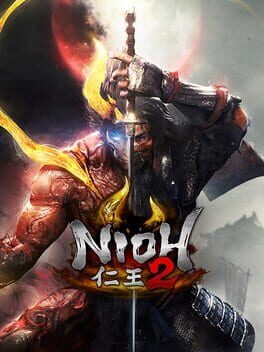
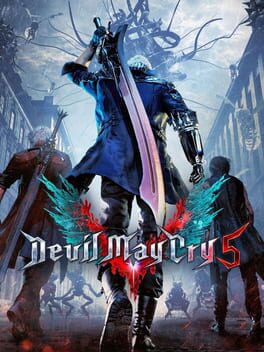
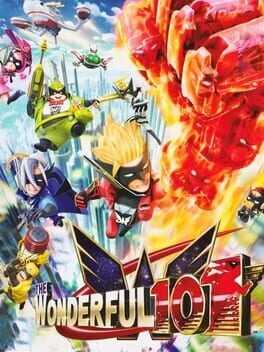




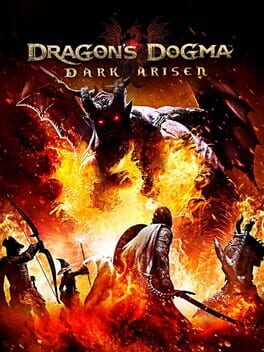

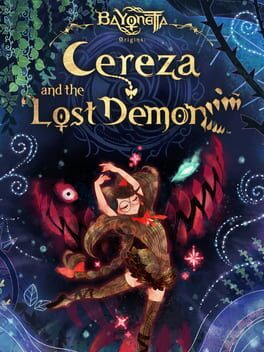
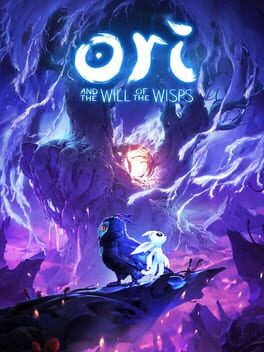
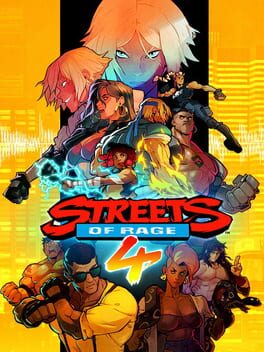
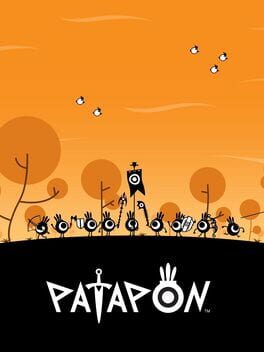

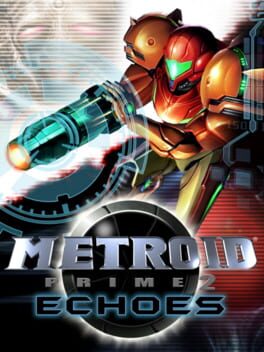







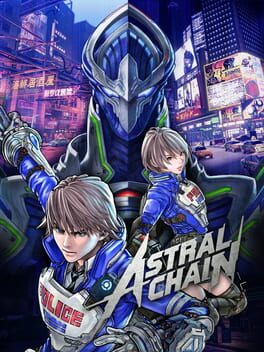
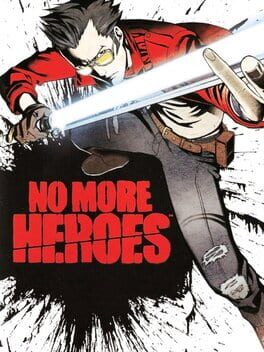
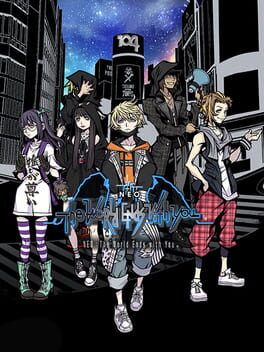


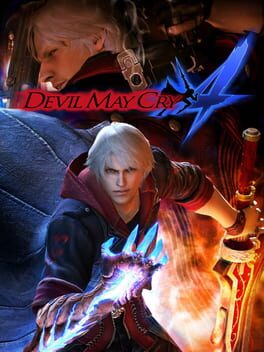
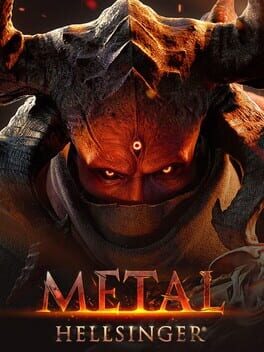
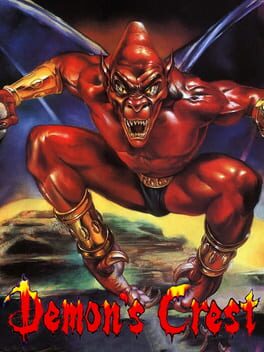
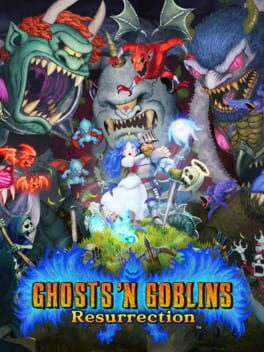
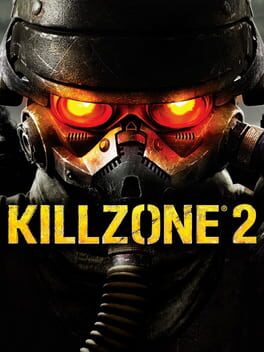
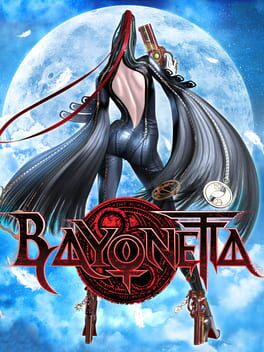
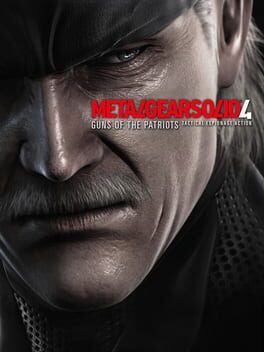
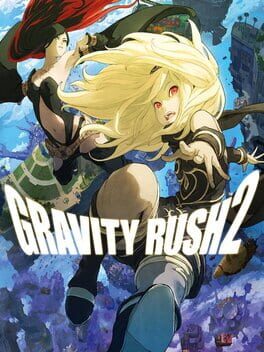

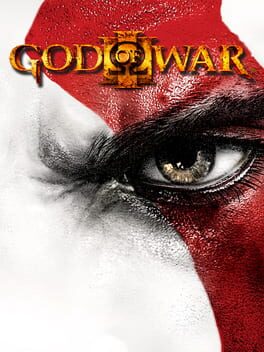
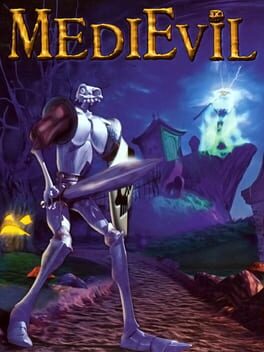
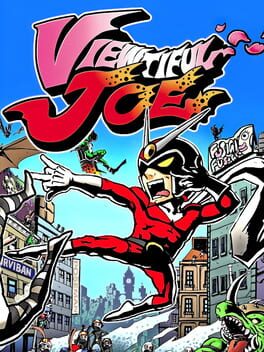
Reyn
4 months ago
https://drive.google.com/file/d/1Hc-oaLdpJMsbz1k7xkcUybyFNL4MQ-Ln/view?usp=drivesdk